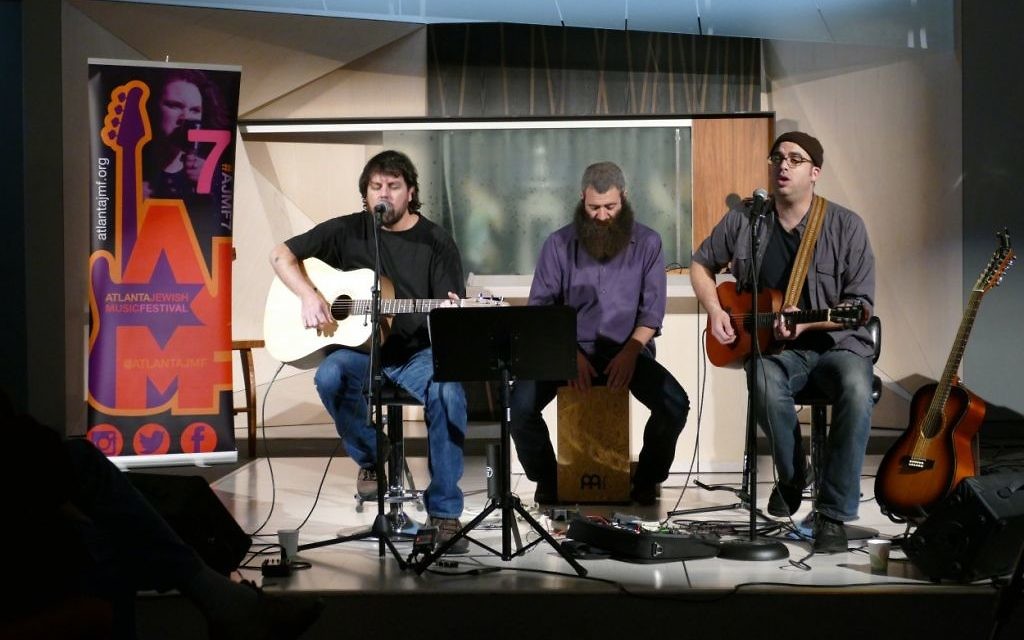A Long, Strange Trip to the Promised Land
Grateful Dead songs go to Israel, enter Hebrew, visit Sandy Springs

Jewish Deadheads rejoiced when Israeli recording artists Sagol 59 and Ami Yares performed at Congregation Or Hadash on Monday, Dec. 14.
The musicians, who recently released “Promised Land,” their collection of Hebrew-language Grateful Dead covers, made their way through Atlanta on the second stop of an East Coast tour that also hit Baltimore, Philadelphia and New York.
The album was released in April and includes Hebrew versions of such Dead classics as “Tennessee Jed,” “Sugaree” and “Friend of the Devil,” all translated by Khen Rotem, who records as hip-hop artist Sagol 59.
Get The AJT Newsletter by email and never miss our top stories Free Sign Up
“The difficult part is choosing what not to translate,” he told the AJT. “I chose songs that have a more square lyrical format and less of the abstract lyrics because it’s very hard to capture in

Hebrew. I look at the text and try to find a hook or a main phrase of a song and see if it has an equivalent in Hebrew. Once you realize that Tennessee can turn into Kfar Hanassi or Bertha can turn into Netta, then Ideas start flowing.”
After Rotem spent 18 months translating the Dead’s lyrics, they recorded the album at Yares’ home in Jaffa over two weeks.
The project was officially authorized by the Grateful Dead’s publishing company, Ice Nine.
Yares, a New Jersey native who met Rotem at a music venue in Tel Aviv, was brought into the project to perform lead guitar and backing vocals. He left Israel shortly after the album was recorded and now lives in Philadelphia.
“The album was done in a bomb shelter at my house in Jaffa,” Yares said. “Every new construction has a secure room in case something were to happen, and it also makes a great recording studio. Coincidentally, my house is two blocks away from a mosque, so we had to stop recording every time they had the call to prayer.”
At Or Hadash, the two were accompanied by Drew Cohen, who directs the Weber School’s music program and who set the rhythm on the cajon. Tie-dyed kippot and T-shirts dotted the sanctuary, and the lively crowd enjoyed Rotem’s translations of Dead classics.
The performance was sponsored by the Weber School, Or Hadash and the Atlanta Jewish Music Festival.

Besides introducing Grateful Dead fans to Israeli music, Rotem and Yares hope that with this project, more Israelis will be exposed to the free-flowing sounds of the Dead, the world’s first jam band.
“A lot of Israeli underground Deadheads came out of the woodwork after this album,” Rotem said. “It’s a growing community. A lot of people in Israel also told me they discovered the band through this project, which is great.”
“It’s safe to be a Deadhead in Israel now,” Yares said.
Photos by David R. Cohen




comments